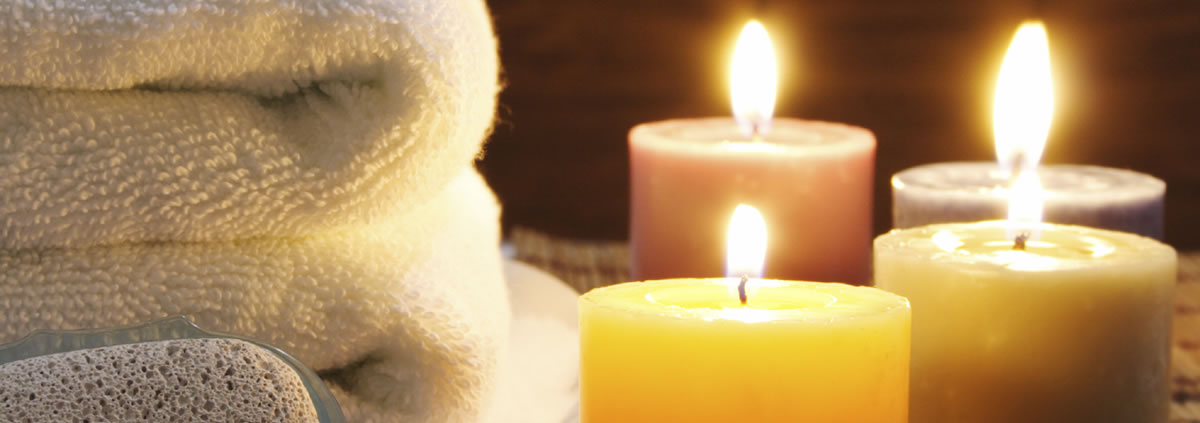Reducing Toxic Chemical Exposure In Your Home
Evidence continues to grow demonstrating a strong and direct correlation between various chronic diseases and exposure to toxic chemicals. Endometriosis has been linked to exposure to dioxins and certain pesticides. DDT exposure has been linked to the development of Alzheimers. In February 2014, Parkinson’s disease was linked to the exposure of benomyl, a fungicide. In 2013, the State of California banned the use of fire-retardants in foam used in various furniture for its undeniable connection to cancer. Consumers should be wary! We strongly encourage IC patients to remove toxic chemicals from their homes.
Clothing
Blogger Lindsey Dahl, Deputy Director of the Safer Chemicals, Healthy Families coalition reported on the toxic use of chemicals in clothing in a blog titled “Toxic Couture.” She wrote “Toxics are showing up in all parts of the supply chain of textiles, in the production and manufacturing, the clothes themselves and our routine cleaning of garments.” (1) Formaldehyde is often used a treatment for “wrinkle-free” perma-press and polyester shirts. Some sportswear companies have used toxic PFC’s, found in Teflon, to create water repellant fabrics. Pthalates, known for their hormone disruptive effect, have been found in tee-shirts and womens lingerie. Pesticides are often sprayed on clothing before they are shipped from overseas.
My mother was a victim of chemical exposure from clothing. She purchased a blouse from a major department store that had been made in China. She wore it without washing it first and the skin across her back, from waist to shoulders, developed a hamburger like rash that she has now had for years. Despite numerous visits to various doctors and dermatologists, no one has been able to explain this rash nor provide a treatment that will eliminate it. Similarly, my best friend purchased a pair of high end sandals just two years ago that, after one use, caused blisters and chemical burns wherever the leather straps touched her skin.
- Whenever possible, select clothing made in the USA, preferably from 100% natural fibers, such as cotton or linen.
- Do a simple smell test of the fabric? Does it smell as if its been treated with chemicals? Be particularly cautious of fabrics that have a strong, motor oil like smell which suggests that the product was treated with a pesticide during shipment.
- All new clothing should be washed before wearing to reduce that toxic exposure.
- Avoid purchasing clothing that requires dry cleaning. Tetrachloroethene & perchloroethylene are used to dry-clean clothes and are considered a probable carcinogen by the World Health Organization and the U.S. Environmental Protection Agency.
The Home

Gaye Sandler
Gaye Sandler, author of The Proactive Patient: Managing IC and Related Conditions, advises patients to clean up their home environment, starting first with indoor air quality. Products that release chemicals into the air should be removed, such as strong cleaning products containing bleach or ammonia, oven cleaners, waxes and paint strippers, room deodorizers and scented products. She wrote “It is very important to avoid expo- sure to toxic pest control in your environ- ment. Replace insecticide sprays, no-pest strips, moth balls, crystals and moth proof paper.”(1) Air filters can also be very helpful.
An emerging concern is toxicity in new furniture due not only to the use of particleboard, plywood and/or fiber- board that contains formaldehyde, but also flame retardants in foam and fabric that have been linked to cancer. Sarah Jannsen MD PhD, Senior Scientist for the Natural Resources Defense Council, wrote “You may not know it, but your couch is also full of toxic chemicals put there to supposedly protect you from fires. Almost all couches, whether or not they were purchased in California, contain at least one of five different flame retardant chemicals. Some of the chemicals are linked to cancer, others are linked to neurodevelopmental and fertility problems. But most chemicals have never been adequately tested for safety due to weaknesses in the federal law…”(2)
She did a very interesting experiment. She cut one inch square of foam from a cushion on her couch and sent it for testing at Duke University. She learned that her couch contained over a pound of a toxic chemical known as Chlorinated Tris, a fire retardant that was banned from childrens pajamas more than 35 years ago after it was shown to cause cancer. In her video My Toxic Couch she said “If there’s one thing that we’ve learned about industrial chemicals is that they move around the environment. They evaporate into air, collect into dust and contaminate people. They get into our bodies where they can cause serious harm.”(3)
Older foam chairs and couches could be leaching another flame retardant, pentaBDE, into your home. Banned throughout the world due to its neurotoxic and hormone disruption effects, its use in the USA was so pervasive that Americans had 15 times the level of pentaBDE in their systems than Europeans. Toddlers had three times the level of adults.(4) California Governor Jerry Brown has called for revising furniture standards in California in 2013 to reduce this risk
Product Selection Tips
The Minnesota Pollution Control Agency offers excellent tips on reducing toxic exposure.(5) They suggest:
- Whenever possible, buy products that are free of toxic chemicals. Alternatives are available. The market for non-toxic household products is growing in response to customer demand.
- When purchasing products, take a minute to carefully read the label. Look for products that appear to dis- close all their ingredients. “Signal words” will help you spot ingredients that are harmful: caution, warning, danger, and poison (“caution” is least hazardous and “danger” is most hazardous; extremely toxic products must also include the word “poison.”). Choose the least-hazardous product to do the job.
- Select products (cleaners, shampoos, etc.) made from plant-based materials, such as oils made from cit- rus, seed, vegetable or pine. By doing so, you are selecting products that are biodegradable and generally less toxic. These products also provide the additional benefit of being made from renewable resources. Ask for plant- based products at your local grocery or retail store.
- Choose pump spray containers instead of aerosols. Pressurized aerosol products often produce a finer mist that is more easily inhaled. Aerosols also put unnecessary volatile organic chemicals into your indoor air when you use them.
- Ask for unbleached paper prod- ucts or products bleached with hydro- gen peroxide or oxygen, which produce less pollution during papermaking.
Household cleaning
- Baking soda works well to clean sinks, tubs and toilets, and it freshens drains as well.
- Vegetable oil with a little lemon juice works wonders on wood furniture.
- Simmer a mixture of cloves and cinnamon or use vinegar and water as a safe and environmentally friendly air freshener.
- Consider how you can eliminate odor problems rather than just covering them up.
- Use vinegar and water in a pump spray bottle for cleaning mirrors and shining chrome. Vinegar or soap and water with drying rags or a squeegee also work well for cleaning windows.
- Use reusable unbleached cotton towels, rags, and non-scratch scrubbing sponges for all-purpose cleaning instead of bleached disposable paper products.
- Use dishwasher detergents that are free of chlorine bleach and lowest in phosphates.
- Use bathroom cleaners that are free of aerosol propellants and antibacterial agents.
Laundry
- Instead of more complicated detergents, try using a combination of washing soda and borax in your machine. These are usually as effective as more complex formulas and are also usually cheaper.
- When possible, hang clothes to dry outside to avoid using the dryer, which uses energy and depletes resources. In winter, fluff the clothes in the dryer, and then hang to dry indoors. You get the added benefit of increased humidity.
- Avoid bleach when possible. If whitening is needed, use non-chlorine bleach, which is oxygen based and often highly effective.
- Buy clothes that don’t need drycleaning or use an alternative called “wet cleaning.” Clothes that have been drycleaned emit perchlorethylene, a chemical that can cause cancer. The wet cleaning process uses water so there are no harmful gases emitted from the cleaned clothing.
Building and remodeling
- When building or remodeling your home, ask for building materials and supplies that have the least amount of formaldehyde and other volatile organic compounds. Toxic fumes can come from unexpected sources like new carpet and cabinets.
- Choose no- and low-VOC paints and varnishes when finishing walls, floors and furniture. Make sure you have proper ventilation.
- Ask for carpeting that meets stan- dards for indoor air quality established by the Carpet and Rug Institute. Once a carpet is installed, thoroughly air out the house for at least 48 hours.
- For decks and playground equip- ment, use reclaimed cedar or redwood, which is naturally resistant to fungus and insects. Or use recycled plastic lumber. Ask about these products at your home improvement store.
- Avoid using “green-treated” lumber, which is treated with the toxic compound copper chromium arsenate (CCA). In particular, don’t use it for eating surfaces on picnic tables or children’s play equipment. Clean up all scrap treated wood and sawdust and dispose of it properly – it should go to a lined landfill or licensed waste incinerator. Treated wood should not be burned at home for bonfires or stoves/ fireplaces.
Additional Reading
References:
- Sandler G. et al. Patient to Patient: Managing IC and Related Conditions. Bon Ange LLC 2000 p. 05 (out of print)
- Jannsen S. “Toxic-free furniture on the horizon.” Safer Chemicals Health Families blog. February 8, 2013 – Jannsen S. “My Toxic Coach” Youtube. February 7, 2013
- Monoyios K. “Worse Than Bedbugs, It’s the Couch Itself” Scientific American Guest Blog. November 28, 2012 –
- “Why reduce toxics” Minnesota Pollution Control Agency. Accessed 2/10/12 – http://reduce.org/toxics/index.html

